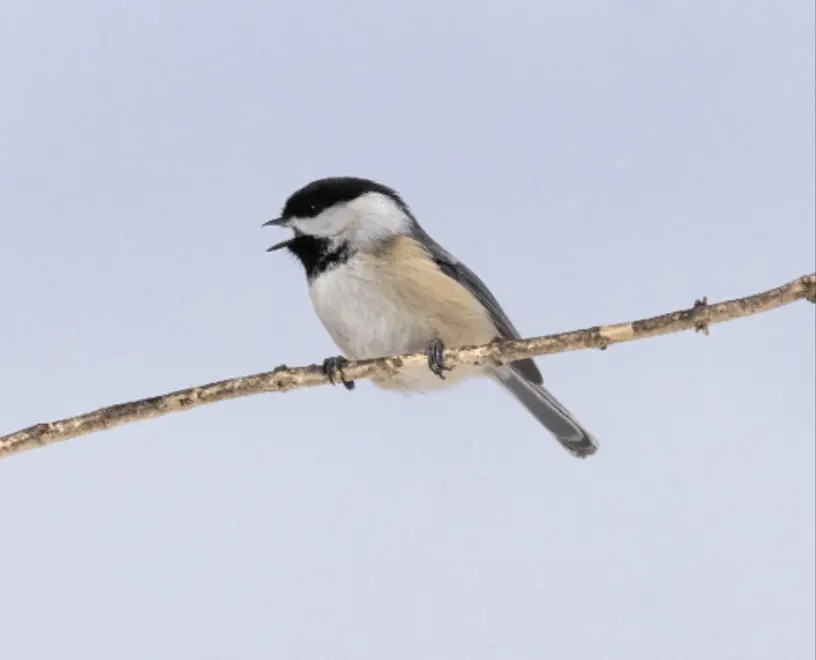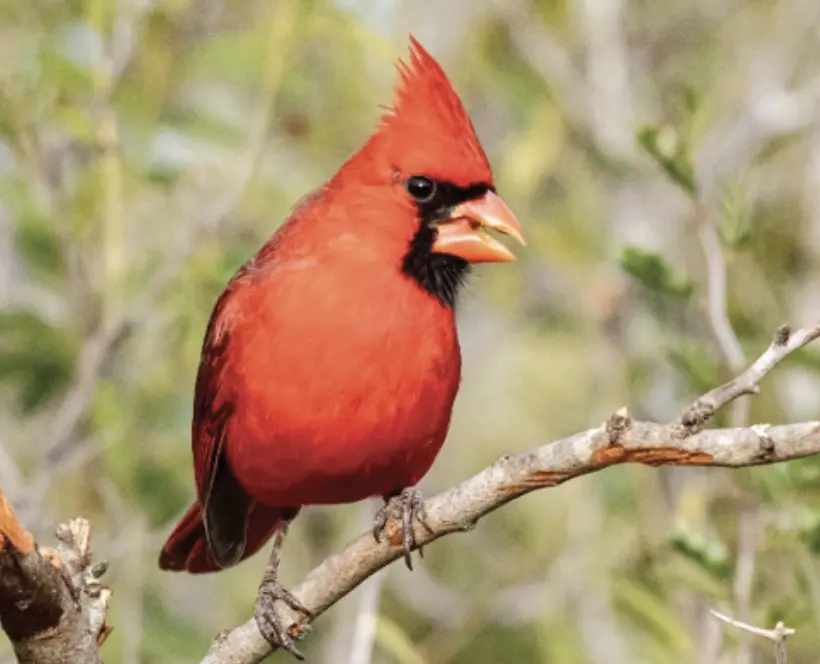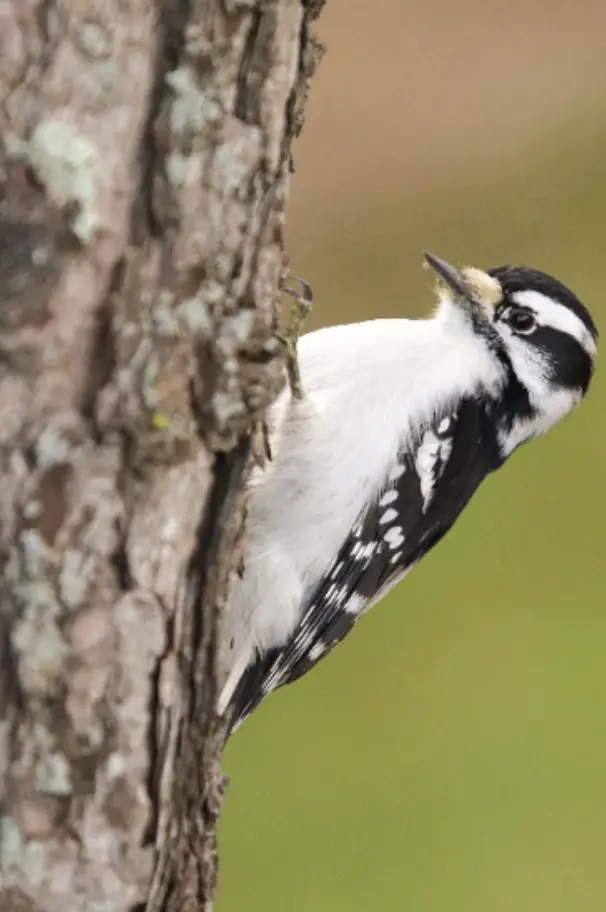By Frank Gallo
You were given a bird feeder for your birthday, and you have started feeding the birds. Now, after enjoying observing their antics at your feeders, you wonder which birds are visiting, and you want to know more about them. Now what?
Here are my suggestions for anyone getting started watching birds.

1. Buy a bird book. To help eliminate confusion, I recommend a guide to just Eastern birds, such as the Peterson Field Guide to Eastern Birds which uses arrows to point out important identifying field marks, or the Sibley Birds East which has wonderful illustrations. Both allow for direct comparisons of similar species. Note: Both are available as apps for your phone, providing convenient access to a wealth of information, and offering songs and calls to listen to in the field. Remember, however, the apps cover all North America, which can add confusion for beginners as there are more choices. It is also harder to compare birds directly on your phone.
2. Read Sibley’s Birding Basics. This companion guide from a leading expert is a crash course in how to approach learning bird identification.
3. Get a Reference Guide such as, The Birder’s Handbook (most detailed) or National Geographic’s, Complete Birds of North America for background natural history information.
4. Take birding classes. It’s always best to learn from others.
a. Periodically, I offer Beginning Birding and Birding by Ear classes and free bird walks. Visit https://newcanaannature.org/adult-birding/.
5. Join a Bird Club, the CT Ornithological Association (COA), and your local Nature Center that offers walks/talks.
a. My NCNC free local bird walks will resume in April and continue through the spring.
b. New Haven Bird Club offers free monthly walks farther afield, and evening talks. https://www.newhavenbirdclub.org/.
c. COA produces a user-friendly quarterly journal, offers free workshops, and an annual Conference each March. Visit https://www.ctbirding.org.
6. Get the Merlin App for your phone. The app provides a handy reference in your pocket, and there is a quiz feature, so you can quiz yourself. It has AI identification features to help you identify birds by sight and sound. The sound recording feature listens for you. It is roughly 75% accurate but provides a valuable tool for learning birds, their songs, and calls. It shows a picture of the birds it’s picking up, highlights each species as it is singing. It should not be used as a substitute for identifying the birds on your own. Ebird does not accept Merlin-only generated lists.
7. Get the eBird app. This Cornell University database helps you keep track of your bird sighting, aids with locating birds in your area, and is also linked to Merlin. eBird is also available online https://ebird.org/explore, and provides a great deal of birding information.
8. Buy a bird-finding guide. If you are ready to branch out and start looking for birds away from home, a good bird-finding guide is essential. My Birding in Connecticut is available at most bookstores and online.

9. Subscribe to Cornell’s Birds of the World at https://birdsoftheworld.org/bow/subscribe. This online resource has a wealth of current information about birds of the world. Subscriptions start at $49/ year.
10. Binoculars: Binoculars are a useful tool for getting the maximum enjoyment from watching birds. They allow better views, bring out color, and enable the inspection of minute details critical for the identification of similar species.
Choosing binoculars is very personal. It’s always best to handle them before buying. Binoculars come in two types, porro prism (offset tubes) and roof prism (straight tubes). Although optically similar, roof prism binoculars’ internal focus makes them easier to waterproof and are the recommended style for birding.

In the next month’s issue, I’ll discuss binoculars in more depth.
Frank Gallo is the Senior Naturalist at the New Canaan Nature Center, 144 Oenoke Ridge, and the author of Birding in Connecticut – a comprehensive site guide on where when and how to find birds in the State. Email: Fgallo@newcanaannature.org. For more on the New Canaan Nature Center, visit Newcanaannature.org. All photos on this page are courtesy of Frank.

